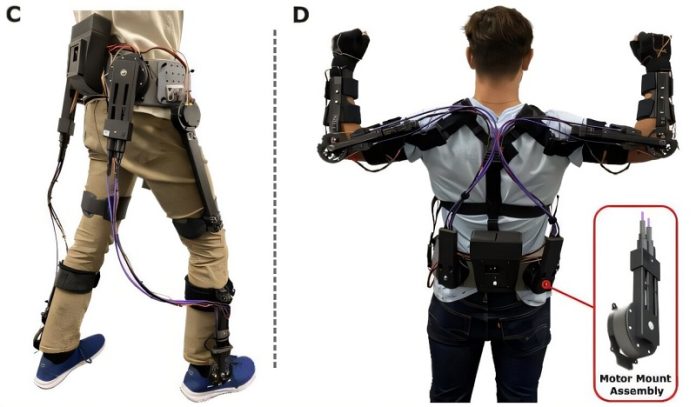
Imagine a world where people with disabilities can walk more freely and comfortably, thanks to robotic legs.
That world is getting closer, thanks to researchers at Northern Arizona University (NAU).
A team led by Associate Professor Zach Lerner has developed a new open-source robotic exoskeleton system—meaning anyone can use it for free.
Exoskeletons are wearable machines that support a person’s movement, often helping people who have difficulty walking due to injuries or conditions like cerebral palsy.
But building these robotic systems is normally very expensive, complicated, and time-consuming. That’s why not many research teams or companies have been able to create them—until now.
The new system, called OpenExo, changes everything.
It provides everything a person or team needs to start building an exoskeleton, including design files, computer code, and clear, step-by-step instructions.
It’s the first complete open-source framework of its kind for exoskeletons, and it’s freely available to anyone in the world.
This could open the door for more researchers, students, and even startups to build life-changing technology without starting from scratch.
Making an exoskeleton isn’t easy. These devices must be safe, helpful, and comfortable to wear. They involve complex engineering, computer programming, and knowledge of how the human body moves.
Because of this, creating a working exoskeleton from the ground up usually takes a lot of time, money, and expertise.
OpenExo gives developers a huge head start by letting them build on years of previous research and real-world testing done by Lerner’s team.
Lerner and his students have already used their exoskeleton designs to help children with cerebral palsy walk more easily and to support patients with gait disorders during their recovery. Their work has earned millions of dollars in grant funding, led to nine patents, and even launched a spin-off company that created a robotic ankle support device now on the market.
With OpenExo, Lerner hopes many more people will be able to join in the effort to develop robotic tools that improve mobility and independence. Especially in a time when government funding for research is harder to get, having free access to high-quality technology like this could make a big difference.
“Exoskeletons can transform lives,” Lerner said. “There’s nothing more rewarding than building something that helps people move and live better.” The project’s first author is postdoctoral scholar Jack Williams. Their findings were recently published in Science Robotics.



